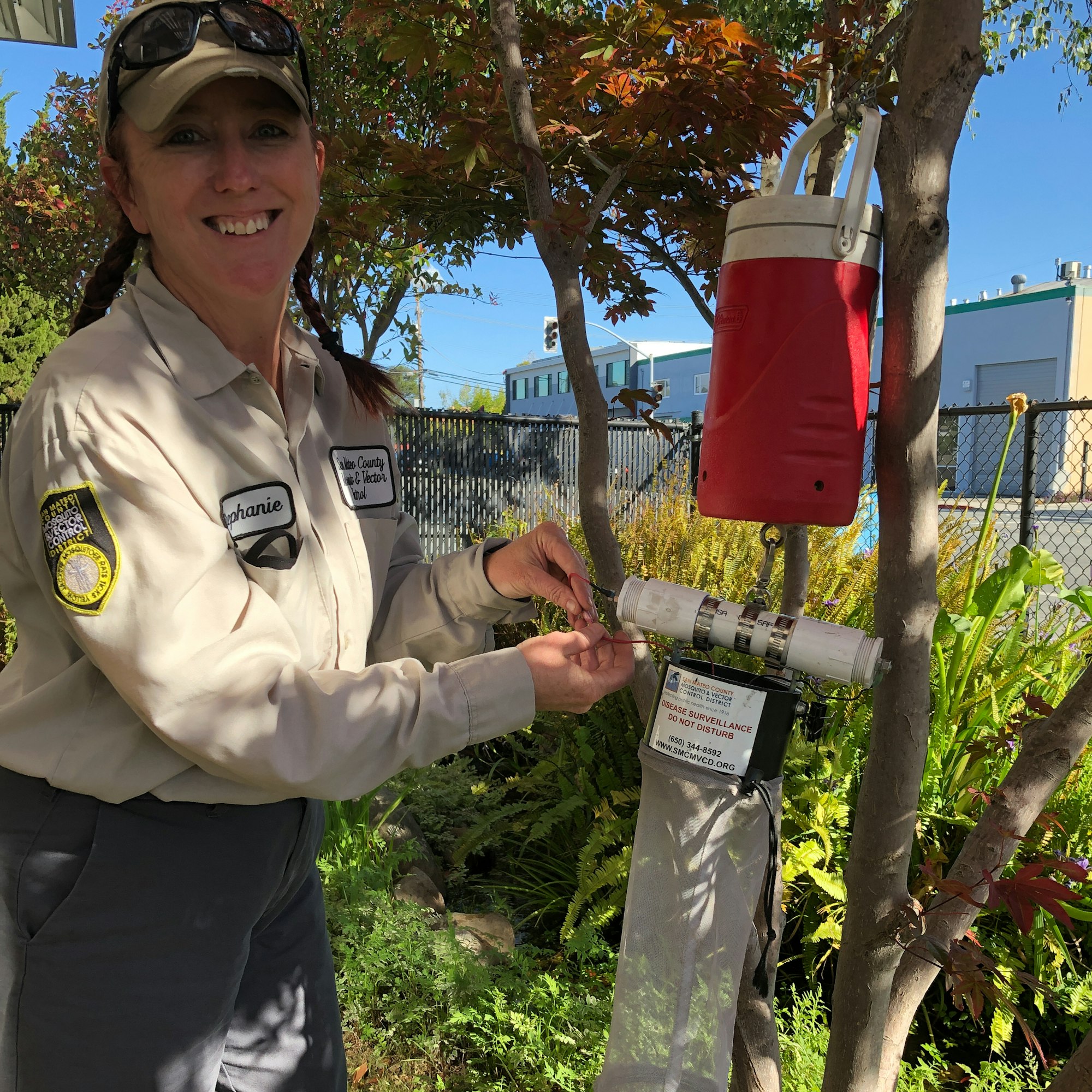Stephanie Busam

Stephanie Busam has worked at the District as a Vector Control Technician since January 2005.
In addition to her duties in her zone, Stephanie has taken part in the Invasive Spartina Project, as well as the efforts to eradicate the invasive Aedes aegypti mosquito from Menlo Park and Atherton. She continues to assist with surveillance for West Nile Virus, including locating breeding sources and educating the public in areas where the virus has been detected. She has also spent time assisting the District laboratory with the Lyme disease surveillance program, from tick collection to tick dissection, and with public education efforts at local schools and community fairs.
Before joining the team at San Mateo County Mosquito and Vector Control District, Stephanie worked as a lab intern at Alameda County Mosquito Abatement District, where she assisted with mosquito surveillance and trapping while completing her Bachelor of Science in Environmental Science from California State University in Hayward. In addition to her work in vector control, Stephanie has over six years of experience in the veterinary field. Stephanie looks forward to continuing to provide the high level of service that the District’s residents have come to expect.
Stephanie's answers to a few questions about working with the District:
What is your favorite part of your job?

My favorite part of my job is being outside and not stuck in an office. The environment changes every day, and each day is different. Especially during different holidays, I like seeing all the decorations people put up – I’ve seen nice train layouts, great Halloween displays, and lots of winter decorations. Another nice part of the job is that we have good staff. I like my coworkers, and it’s a good work environment.
Our staff work throughout the entire County. What is your favorite part/place?
I’ve covered every part of the county in my 20 years here; each area has nice aspects. I think we’re really lucky to be able to see, hear, and smell the ocean. It’s vast and we sometimes take for granted how close it is – we live so near, when many people live very far from an ocean.
What is a commonly overlooked type of standing water you see around people’s homes?
Little tiny drains or things holding just a little water are usually overlooked by people. People don’t realize how little water mosquitoes need to breed. People don’t usually think of sumps and drains, which can hold a little bit of water – just enough for mosquitoes to breed. Or a pool that is not being used and has just a few inches of water in it – but that can be the perfect habitat for mosquitoes to breed. Once I found mosquito larvae in the water that had pooled in a tractor bucket on a construction site.
Something else we are aware of, especially along the Bay side (like Foster City and Redwood Shores) is subsidence. Those areas were built on what used to be marshland, and the land can sink underneath the buildings. When the land sinks, it creates gaps where water can stand and mosquitoes can breed. A few years ago, we were getting reports of mosquitoes from near a store; it turned out there was subsidence under the building. They fixed it, so it’s no longer an issue. However, subsidence can be difficult to fix, and so there are a lot of places where we regularly check under buildings for standing water than can breed mosquitoes.
What is something you wish more people knew?
Bird feeders are a great way to…invite rats to your yard. Birds are messy eaters, and rats will come at night to eat all the seeds they spilled.
I also wish more people knew there are different kinds of mosquitoes, and that each kind can only spread certain diseases. Before this job, I worked in a veterinary hospital, where heartworm medications were prescribed to all dogs. Now that I work here, I understand that the local vector populations are important to consider. We have one species of mosquito here that can transmit dog heartworm – Aedes sierrensis. The common name is the ‘western treehole mosquito’ because it mainly lays eggs in water that collects in treeholes. So it’s a problem in some areas of the County, but not others.
What interest/background brought you to this job?
I worked as a seasonal staff at Alameda Mosquito Control District before starting here; I was setting and picking up carbon-dioxide traps with the laboratory staff. I also assisted with the mosquito colony and other small laboratory tasks. They were not hiring permanent staff at the time. When San Mateo County voters approved a ballot measure to add the north/west parts of the County to the San Mateo County Mosquito Abatement District in 2003, the District hired 5 new staff in the next year – Kim and I were two of those hires.
What residents have to say about Stephanie
This is a spectacular service. Stephanie was out the day after I submitted a request. She was extremely thorough, explained the process very well, super courteous, and did an excellent job. Stephanie is awesome. I no longer have yellow jacket issues in my yard. Thank you.Resident who requested help with yellow jacket nest removal/treatment
